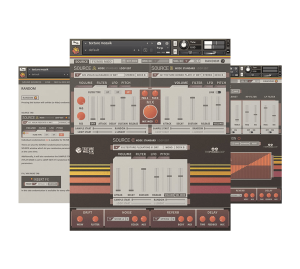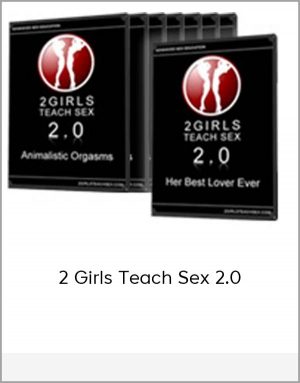ThePhonoLoop Texture Mozaik KONTAKT
$25.00$74.90 (-67%)
Texture Mozaik contains over 120 unique sound sources all inspired by the sounds of the past when recording on tapes, cutting them, then gluing and looping, passing through spring reverbs, etc. was on the agenda.
ThePhonoLoop Texture Mozaik KONTAKT

Check it out: ThePhonoLoop Texture Mozaik KONTAKT
The main idea behind Texture Mozaik was to create an instrument inspired by the sound design techniques used by some of the film and experimental composers from between 50s to 70s.The name of the instrument suggests that it’s mainly focused on the textures – and yes, it’s designed to mix 2 or 3 sound sources to create evolving, old school sounds, but due to the amount of tonal sound sources available in Texture Mozaik, it’s definitely much more than just a ‘background generator’. In fact, as you can hear in available audio demos, Texture Mozaik is perfectly capable of creating melodic parts or even creating main harmony for the production (no other instruments than Texture Mozaik were used in audio demos).
Texture Mozaik contains over 120 unique sound sources all inspired by the sounds of the past when recording on tapes, cutting them, then gluing and looping, passing through spring reverbs, etc. was on the agenda.
You’ll find here gloomy, dirty sounds but also those subtle, delicate ones which can be complementary to these first. For example, one of the sounds included in Texture Mozaik is an bowed acoustic guitar whose strings were connected by a spring with a metal pot hanging on a tripod – which worked as an additional resonator. You will also find here a lot of classic sounds such as violin, chromatic bells, bowed saw, flute and more. As always, all included sounds were passed through several different cassette decks.
Every sound source has been carefully denoised with a high quality algorithm to avoid noise stacking when playing more than one note (there’s still some noise left in the samples to avoid denonising artifacts). Noise can still be added with the noise knob – it’s much more flexible this way and allows the ability to adjust the volume of the noise independently whilst also applying parameters such as filtering. It also creates a more realistic sound, so when playing a few notes at the same time, only one sample of noise instead of few stacked on top of each other will be heard.
From The Technical Point Of View There Are 3 Kind Of Sound Sources In Texture Mozaik:
Standard – looping available in both STANDARD and LOOP EDIT modes – available in SOURCE A, SOURCE B and SOURCE C.
Impacts – looping available only in LOOP EDIT mode, 4 round-robin samples – available only in SOURCE C.
Textures – looping available in both STANDARD and LOOP EDIT modes, no pitch tracking, one voice per SOURCE (can’t play chords) – available in SOURCE A, SOURCE B and SOURCE C.
Source: That’s the main part of the instrument – here you can load sound sources for Source A,B and C and shape them to your needs using for example volume envelope, filter, lfo and pitch envelope or even randomise some of the parameters using RANDOM button.
You can mix SOURCE A and SOURCE B using the MIX knob, MIDI controller or MIX MOD (step sequencer – more on that in the Introduction video below or Quick Guide inside instrument). It’s also possible to change the sample start of every sound source or even alter the position and length of the loop in each sound sources if the Loop Edit mode is active (more on that in the Introduction video below or Quick Guide inside instrument).
In the bottom part (below SOURCE C) there are controls for WOW and FLUTTER which let you dial additional pitch instability to the sound (on top of the natural Wow and Flutter added to the samples by wonky cassette recorders). There are also controls for adjusting the COLOR and volume (MIX) of noise, plus a menu to choose from 4 different noise samples.
Finally, there are two send effects – Convolution reverb (with custom impulse responses: 4 spring impulses, 4 hall impulses & 3 corridor impulses) with 2 controls: BODY (dial it in to get fuller, more metallic sound) and MIX knob. There’s also simple Delay with 3 controls: TIME, FEEDBACK and MIX.
Fx/Mix Modulation: Here you can adjust the parameters of available INSERT EFFECTS, turn them On and Off and load pre-made presets. It’s also possible to save and load your own presets (more on that in the Introduction video below or Quick Guide inside instrument).
There’s also the step sequencer (synced to host tempo) for modulating the MIX knob – it’s possible to change the speed/length of the step sequencer using the LENGTH menu. It’s also possible to randomise the value of every step with RANDOM button or to reset it with RESET button.
Like in the Insert Effects section – it’s also possible to load pre-made presets or even save your own presets for the MIX MOD sequencer (more on that in the Introduction video below or Quick Guide inside instrument).
Quick Guide: Texture Mozaik GUI was designed to be very logical and as user friendly as possible but it’s always better to have some kind of guidance – especially when, like in Texture Mozaik, there’s a lot of editable parameters. This QUICK GUIDE section is to provide quick help for functions that aren’t as straightforward as, for example simple Filter Cutoff knob.
Most of the information from the QUICK GUIDE are also explained in the Introduction video below, so we highly recommend to watch it if you’re interested in this instrument.
Product Specifications:
Format: Native Instruments Kontakt
Over 11 GB Of Samples (Uncompressed, 1540 Samples In Total)
123 Presets (Plus Another 30 Presets From Audio Demos)
Over 120 Sound Sources
4 Noise Samples
Samples Recorded On 4 Different Decks
Organic Sound With Lots Of Little Imperfections
Convolution Reverb With Custom Impulses (Spring/Hall/Corridor)
Lots Of Sound Design Options
Requirements: Native Instruments Kontakt v5.6.6+ or higher.


















